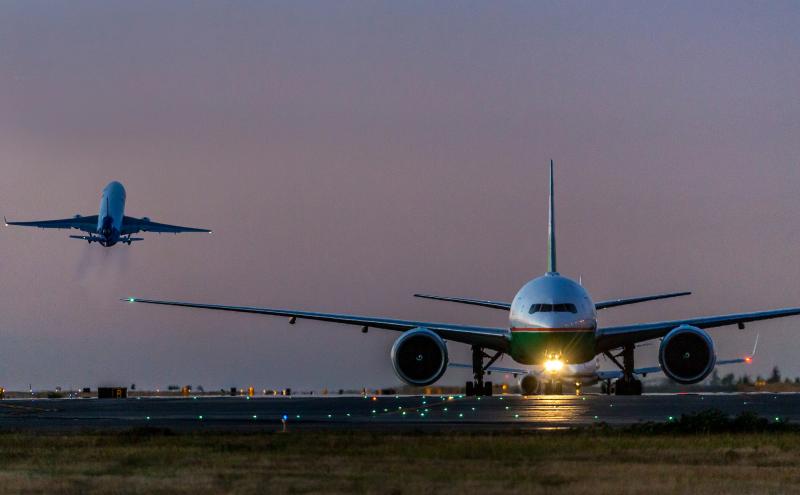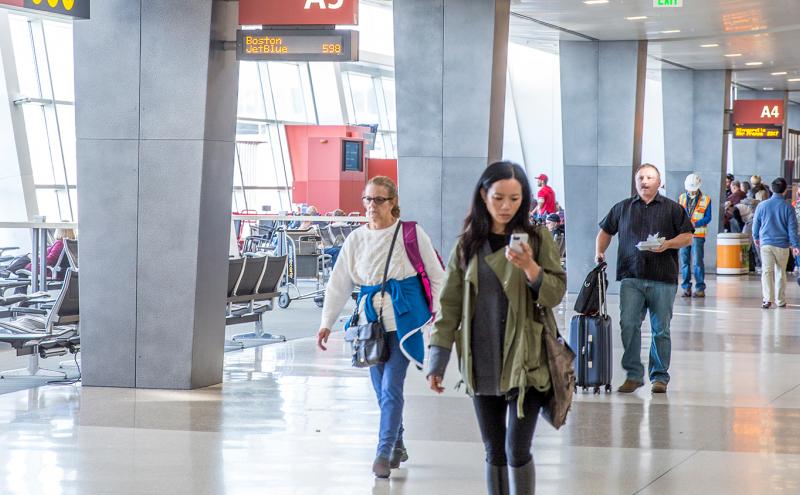
Arlyn Purcell is Director of Aviation Environment and Sustainability at the Port of Seattle
On October 21, the Port of Seattle took an important step as part of its continuing commitment to implement programs and efforts that lessen the effects of aviation noise on Seattle-Tacoma International Airport’s (SEA’s) surrounding communities. For the first time ever, the Port published detailed results for all air carriers operating at SEA during the late-night hours, including who flies the loudest aircraft and how often.
The Late Night Noise Limitation Program is a new, voluntary Port of Seattle initiative designed to reduce late-night aircraft noise at SEA by encouraging airlines to fly during less noise sensitive hours or to transition to quieter aircraft. The program was developed to increase airline awareness of aircraft noise in local communities.
The program captures noise levels for any take-offs and landings between midnight and 5:00 a.m. with four close-in airport noise monitors using the single event noise metric known as Sound Exposure Level (SEL). Noise thresholds have been established at all four noise monitors and any exceedance by an aircraft of any of those thresholds during the late-night hours is captured and included in the Port’s quarterly reporting. In addition to ranking air carriers by their number of exceedances during the late-night hours, a full report is available online that includes data on every carrier who flies during the late-night hours, and for those with exceedances, when that exceedance took place and at which noise monitor.
Beginning in 2020, a penalty score will be assigned to the airline as part of the Port’s Fly Quiet Program if an operation exceeds an established noise threshold.
In the first quarter of the program, monitoring officially began on July 1 and ended on September 30. The Port will produce reports on a quarterly basis with the next report expected in January 2020.
For the third quarter of 2019, the air carriers with the greatest number of exceedances during the late-night hours were:
EVA Air — exceeded noise thresholds 85 times in Q3
FedEx Express — exceeded noise thresholds 57 times in Q3
China Airlines Cargo — exceeded noise thresholds 31 times in Q3
Overall, during the third quarter, there were 239 exceedances of late-night noise thresholds, or an average of fewer than three per night. Alaska Airlines, SEA's largest carrier, exceeded noise thresholds with two flights, which is less than one percent of their flights. Sixteen air carriers operating at Sea-Tac during late night hours, including Delta Air Lines, had no late-night noise exceedances during the third quarter of 2019.
The Port of Seattle is in the process of informing all air carriers of the results and will continue to do so on a quarterly basis. The Port will meet individually with air carriers with the most exceedances during the late-night hours to discuss the results and encourage schedule and operational changes to lessen aviation noise during these hours.
The Port of Seattle cannot dictate an air carrier’s schedule or the type of aircraft it operates. However, through the Late-Night Noise Limitation Program, the Port can draw attention to late-night flights with the goal of influencing incremental change over time.
The Late-Night Noise Limitation Program is an outcome of the Sea-Tac Airport Stakeholder Advisory Round Table (StART), an advisory round table formed by the Port of Seattle in 2018 that brings together the Port, air carriers, local airport communities and the Federal Aviation Administration (FAA). StART supports collaborative dialogue on airport-related issues and identifying practical solutions to reducing aviation-related impacts in neighboring communities. In addition to the Late-Night Noise Limitation Program, StART has developed and is currently working on several efforts to reduce aviation-related noise, including the implementation on September 4 of a new Runway Use Plan agreement with the FAA that minimizes use of the third runway during the late-night hours and the recent launch of an airfield noise assessment to investigate and determine sources of noise produced by aircraft on the ground and potential ways to minimize their impact.





